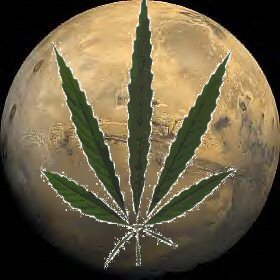The Martian lander Phoenix, the first American spacecraft to be run by an American university and not a government agency, has now entered the critical Entry Descent and Landing phase of the mission.
According to mission control at the University of Arizona, tomorrow afternoon, the craft will enter the thin Martian atmosphere, accelerate to approximately 13K mi/hr, decelerate and land in an area known as Region D; a 620 square mile area, 800 feet deep, located in the Scandia Calles region of Vastitus Borealis near the Martian North Pole.
We will have confirmation of landing during acquition of signal at 4:53 PDT.
NASA says the weather at Region D looks clear, with temperatures ranging from -110 to a daytime high of -28 F.
If all goes well, within 60 seconds of landing, the Mars Surface Operations phase begins and will end with the destruction of the lander during the winter, when the spacecraft will become encased in the expanding North Pole.
Hopefully, before Phoenix meets its icy end, its scientific instrument packages will relay to the science teams back on Earth whether Mars contains frozen water and any organic compounds under the surface.
According to mission control at the University of Arizona, tomorrow afternoon, the craft will enter the thin Martian atmosphere, accelerate to approximately 13K mi/hr, decelerate and land in an area known as Region D; a 620 square mile area, 800 feet deep, located in the Scandia Calles region of Vastitus Borealis near the Martian North Pole.
We will have confirmation of landing during acquition of signal at 4:53 PDT.
NASA says the weather at Region D looks clear, with temperatures ranging from -110 to a daytime high of -28 F.
If all goes well, within 60 seconds of landing, the Mars Surface Operations phase begins and will end with the destruction of the lander during the winter, when the spacecraft will become encased in the expanding North Pole.
Hopefully, before Phoenix meets its icy end, its scientific instrument packages will relay to the science teams back on Earth whether Mars contains frozen water and any organic compounds under the surface.





No comments:
Post a Comment